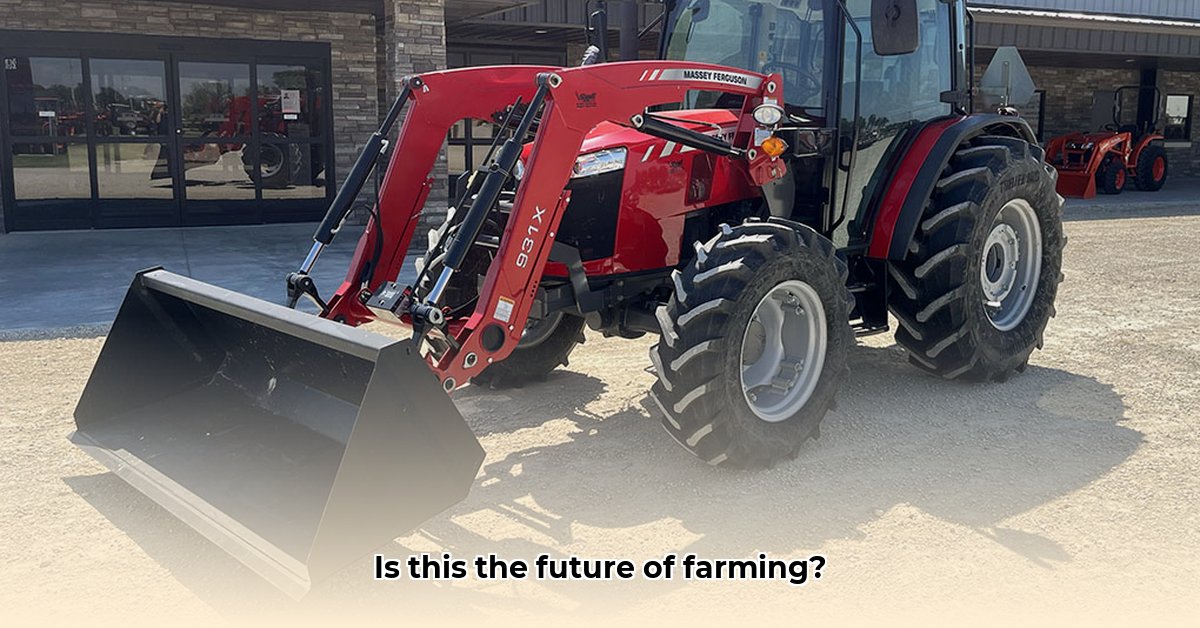
Ackerman Equipment's introduction of Kioti tractors, UTVs, and zero-turn mowers to Mount Hope, Ohio, marks a significant development in the region's agricultural landscape. This arrival promises potential benefits for sustainable farming practices, but also raises questions about its long-term impact and overall feasibility. For more on tractor comparisons, see this helpful resource: tractor reviews.
Kioti's Entry: A Detailed Analysis
The decision by Ackerman Equipment to introduce Kioti machinery signifies a shift towards more precise and efficient farming methods. These smaller, more fuel-efficient machines could reduce soil compaction and environmental impact compared to larger tractors. However, a thorough assessment requires concrete data on fuel efficiency, emissions, and overall impact on soil health. Direct comparisons to existing equipment used by Mount Hope farmers are crucial to gauge potential cost savings and relative efficiency gains.
Impact on Mount Hope's Agricultural Landscape
Understanding the implications of Kioti's arrival requires a detailed analysis of Mount Hope's farming practices. The predominant crops, farm sizes, and existing infrastructure directly influence the suitability of Kioti's equipment. Large-scale operations might find limited utility in the smaller tractors, while smaller-scale farms focused on produce like fruit or vineyards might benefit significantly from their maneuverability and fuel efficiency.
Stakeholder Perspectives and Potential Challenges
Kioti's success in Mount Hope hinges on numerous factors, with varying expectations among stakeholders.
| Stakeholder | Short-Term Goals (0-1 year) | Long-Term Goals (3-5 years) |
|---|---|---|
| Ackerman Equipment | Successful sales; establishing a strong customer base; building brand reputation. | Becoming the leading supplier of Kioti equipment in the region; expanding product lines and service offerings. |
| Mount Hope Farmers | Lower operating costs; improved efficiency; simplified maintenance. | Increased yields; a smaller environmental footprint; enhanced profitability. |
| Environmental Groups | Reduced emissions; minimized soil erosion; promotion of sustainable practices. | Widespread adoption of eco-friendly farming methods throughout the region. |
| Local Government | Economic growth; job creation; adherence to environmental regulations. | Development of sustainable agriculture initiatives; attraction of further investment. |
Potential challenges include equipment reliability, market acceptance, regulatory compliance, and the potential for unforeseen negative environmental impacts. Proactive mitigation strategies, including robust service contracts, targeted advertising campaigns, proactive regulatory engagement, and ongoing environmental monitoring, are crucial for addressing these risks.
Key Takeaways:
- The introduction of Kioti equipment presents both opportunities and challenges for sustainable agriculture in Mount Hope.
- A comprehensive data-driven analysis is needed to assess the true impact on fuel efficiency, emissions, and overall environmental sustainability.
- The success of Kioti's entry depends on a variety of factors, including stakeholder collaboration and effective mitigation of potential risks.
How to Compare Kioti Tractor Fuel Efficiency:
Ohio farmers increasingly prioritize sustainable practices, making fuel efficiency a critical factor. Comparing Kioti's fuel efficiency necessitates a systematic approach:
Define Needs: Determine the specific tasks and acreage for which the tractor will be used. Selecting the appropriately sized tractor is crucial for fuel efficiency.
Gather Data: Collect manufacturer-provided fuel consumption data (gallons per hour or liters per hectare), while acknowledging that these figures may represent ideal conditions.
Account for Real-World Factors: Consider soil conditions, terrain, and typical farming practices in Mount Hope.
Consult Independent Reviews: Review feedback from other Ohio farmers regarding real-world fuel consumption.
Consider Test Drives: If possible, test drive competing models to compare fuel gauge responsiveness and power delivery under realistic conditions.
Beyond fuel efficiency, consider total cost of ownership (purchase price, maintenance, repair, and resale value) to make a fully informed decision.